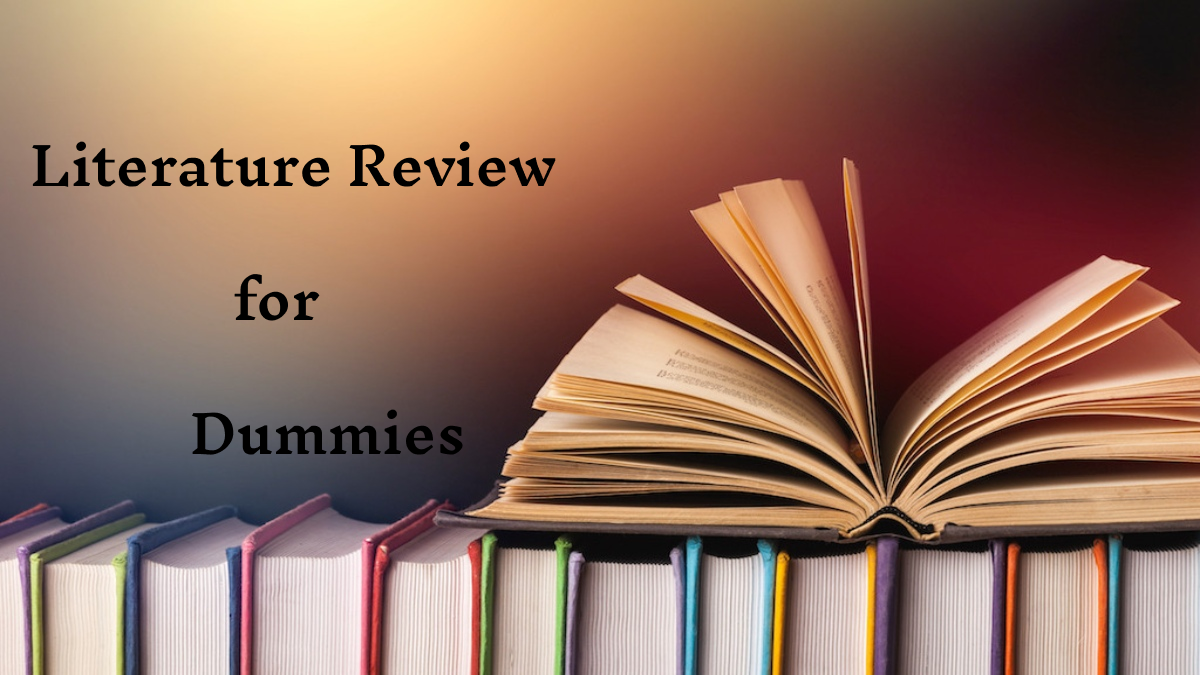Literature Review Guide-Literature Review For Dummies

In academic writing, a literature review is often considered the most difficult part of the writing process. Because students are not aware of what a literature review actually is, when they are assigned the task of writing a review, they start looking for a literature review guide. In order to write a literature review, you must have knowledge about it; only then will you be able to write it with more clarity. Well literature review is not as difficult as it is thought of. If you understand it well, then you can write it easily.
Let’s make it easy to understand and walk through this literature review guide.
Literature Review Guide
In this literature review guide, you will see what a literature review actually is, what its types are, the format for writing a literature review, and how to reference and cite a literature review.
What is a Literature Review?
A literature review is a critical review, evaluation, analysis, and summary of current published material on any topic or subject. It includes the review of any scholarly article, journal article, book, research paper, or any other academic writing currently published. It identifies key concepts, trends, and the gaps in the research made on the specific topic.
In the literature review, we don’t present anything new or give our personal opinions; instead, we evaluate, synthesize, and summarize different research that have been made on a topic. It helps you understand the existing research done on a topic.
You start by reading different research papers, journal articles etc, to know what kind of research has been made of the topic earlier, compare the different researches made by different authors, what their findings were, identify the gap in each study, and provide a critical evaluation of it. It does not present any new information, just analyzes what other researchers have found out on a specific topic.
Types of Literature Reviews
There are different types of literature reviews. Each type has its own goals and methodology. Here are some popularly used literature review types:
- Narrative
- Critical
- Theoretical
- Systematic
- Argumentative
- Descriptive
- Scoping Review
- Meta-Analysis
- Meta-Synthesis
- Integrative

Format For Writing a Literature Review
The format of the literature review plays an important role in making your review presentable and understandable. It gives your literature review a clear structure and makes it easy for one to read it.
Here is the proper format of a literature review that you must follow:
1. Introduction
In the introduction, introduce your topic, tell what the central theme of your review is and define your research question.
While writing the introduction of your literature review, keep the following things in mind:
- State the purpose of your review.
- Outline the scope of your review.
- Tell the importance of your topic.
- Tell about what you are focusing on in this review.
- Briefly tell how you have organized your literature review, and which structure you are following.
- Briefly outline what is included in the review and what is not.
- Keep it short but not too short that it doesn’t introduce the topic well.
2. Main Body
In the main body present, analyze, and critically evaluate your topic.
While writing the main body of your literature review, keep the following things in mind:
- Give some background information on the topic.
- Organize your review according to the theme/structure you have chosen.
- Briefly discuss each research by summarizing its key concepts, findings, and methodology.
- Highlight the contradiction among different studies and the limitations of each research.
- Tell how one study relates to another by identifying its pattern.
- Tell how the finding relates to your research question and how it fits into the existing study.
- Critically evaluate the topic by comparing different studies, identifying the gaps in each study, and the strengths and weaknesses of each.
3. Conclusion
In conclusion, you have to conclude what you have drawn from studying different researches.
While concluding your literature review, keep the following things in mind:
- Summarize the key findings.
- A brief conclusion on the topic.
- Summarize the gaps of each study by telling how they could be improved in the future.
- Briefly tell about the future research directions on the topic.
4. References
In the end, add the references of the papers/articles you have studied and used in your literature review. When adding references and citations, maintain a consistent style. You have to use only one style for references and citations throughout your review.

Literature Review Referencing and Citation
Referencing a literature review means mentioning the original author or giving credit to the author of particular research whose studies, ideas you have used in your review. Mentioning a reference and citation is an important part of a literature review as it shows your research is made on the basis of a credible source.
You have to add a reference/citation when you have:
- Summarize other author’s work.
- Paraphrase their ideas or theory.
- Quote their words exactly in your literature review.
- Used data and statistics from another source
Let’s have a look at how you can add references in your literature review. Here are some most popularly used styles for adding references in academic writing.
APA Style (7th Edition)
- In-Text Citation Format
(Author Name, Year)
- Example
Online learning improves flexibility but may reduce social interaction among students (Smith, 2023).
- Reference List Format
Author Name (Year). Title of the article. Journal Name, volume(issue), pages.https://(link of the article).
- Example
Jhonson Lee(2021). Exploring motivation in remote learning. Journal of Educational Research, 45(2), 120–134.https://….
MLA Style (9th Edition)
- In-Text Citation Format
(Author Page)
- Example
(David 110)
- Reference Format
Author Last Name, First Name. “Title of Article.” Journal Name, vol. no., year, pages.
- Example
Harry, Lisa. “Student Engagement in Online Learning.” Modern Education Review, vol. 12, 2020, pp. 80–95.
Chicago Style Literature Review
1. Author Date Style
- In-Text Citation Format
(Author Year, Page)
- Example
(Ali 2023, 75)
- Reference Format
Author Last Name, First Name. Year. “Title of the Literature Review.” Journal Name volume (issue): pages.
- Example
Ali, Farah, and Raja Kumar. 2022. “A Systematic Literature Review on Student Engagement in Online Learning Environments.” Journal of Educational Research 58 (3): 200–218.
2. Notes and Bibliography Style
- In-Text Footnote Citation (Full Footnote) Format
Author First Name Last Name, “Title of the Literature Review,” Journal Name volume, no. issue (Year): page range.
- Example
Farah Ali and Raj Kumar, “A Systematic Literature Review on Student Engagement in Online Learning Environments,” Journal of Educational Research 58, no. 3 (2022): 200–218.
- In-Text Footnote Citation (Shortened Footnote) Format
Author Last Name and Last Name (both author’s last name), “Shortened Title”, page number.
- Example
Ali and Kumar, “A Systematic Literature Review,” 205.
- Bibliography Format
Author Last Name, First Name, and Second Author. “Title of the Literature Review.” Journal Name volume, no. issue (Year): page range.
- Example
Ali, Farah, and Raj Kumar. “A Systematic Literature Review on Student Engagement in Online Learning Environments.” Journal of Educational Research 58, no. 3 (2022): 200–218.
Literature review can become one of the easiest parts of academic writing only when understood clearly. All you have to do is learn about its different types, the format for writing a literature review, and learning proper reference and citation style. If you will learn it properly, then you will find it easier than anything else.
So what are you waiting for, learn now and take your academic writing to the next level with this literature review guide.